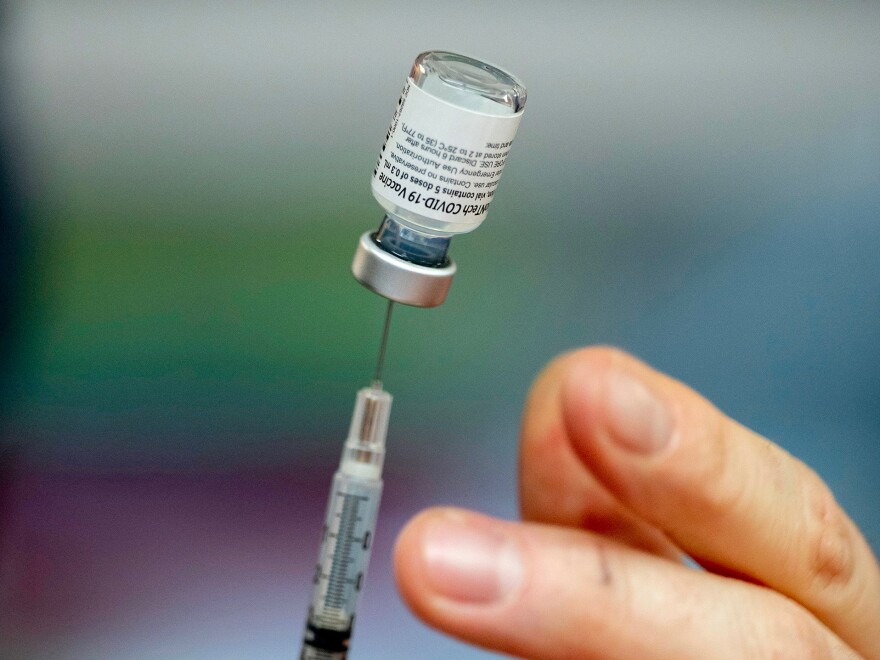It’s no secret that the Roaring Fork Valley’s three counties are interconnected and frequented by seasonal visitors, and those factors show up in the latest COVID-19 vaccine data. In the four months since vaccine rollout began in the area, more than 40% of all doses administered in Pitkin County went to people who reside outside of the County – and health officials say that is by design.
Carly Senst, Pitkin County’s vaccine coordinator, said two groups of non-residents are driving that trend. The first is the county’s workforce. About half of people working in Pitkin County reside downvalley in Eagle and Garfield counties. Many people qualified and arranged appointments for vaccines through their place of employment.
The second category is made up of people who live in the county part-time but, on paper, are registered as residents elsewhere.
“They’re still part of our community,” Senst said. “They are still going out to our restaurants, they are still frequenting our businesses. Ultimately, the more people who get vaccinated who are within our population, regardless of full-time residency status, the better for everyone.”

Meanwhile, full-time Pitkin County residents themselves are getting vaccinated outside of the county. More than a third of all doses given to Pitkin County residents were administered outside of the county. Garfield County was the most popular spot among those areas, accounting for about 20% of all doses administered to Pitkin County residents.
In Garfield County, “about 20%” of residents got at least one dose outside of the county, according to health officials.
A Shifting Strategy
Counties kept their allocations exclusively for residents in the earliest days of vaccine rollout, when supplies were extremely limited. In January, about a month after the first vaccines were administered, allocations began to increase and governor Jared Polis advised that residency requirements should not be used to decide who gets doses.
Now, the waning days of April are ushering in another shift in vaccine strategy. Many eager and easy-to-reach people have already been jabbed, meaning that public health officials will have to ramp-up and target their efforts to get doses into the arms of those who remain unvaccinated.
After administering thousands of doses mass vaccination site in the parking lot of Aspen’s Benedict Music Tent, Pitkin County will close the drive-in facility this week. Senst said the county made the move for a few reasons.
“We had a notable drop in interest from the waitlist individuals as well as higher cancellation rates,” she said. “So now that kind of leads us to ask, what is the most efficient way and how can we lower the barriers so that more people can gain access to the vaccine process?”

Public health experts have been working to communicate with non-English speakers and overcome trust issues surrounding the vaccine. In addition to those barriers, Senst said some are reluctant to get the vaccine because they are unable to take time off of work.
For those reasons, the county has begun coordinating with businesses to run small vaccine clinics for employees at their places of work – thus eliminating the need to request time off work or coordinate travel if they rely on public transportation.
Senst said the spring offseason – when many businesses close or operate on limited schedules – could be a good time to reach workers who have been tied up during the winter.
Garfield County health officials are mounting similar efforts to reach people who remain unvaccinated. Mason Hohstadt, Garfield County public health specialist, said construction and hospitality workers in particular have been difficult to reach – and will be approached with targeted efforts.
He also said the county will partner with the state to help reach rural residents who may have trouble traveling to existing vaccination sites and others who may be reluctant to get the vaccine.
Garfield County, with its significant rural population and relatively high percentage of Latino residents, has been challenged to vaccinate its residents. People in both of those groups have been hard to get vaccinated across the state and country.
About 9% of Latinos in Colorado have been vaccinated, but that community makes up 21% of the state’s population. That disparity is the largest of any demographic group in the state, and one that has persisted since demographic data on vaccines in Colorado became available.
Meanwhile, experts nationwide are highlighting a trend of vaccine hesitancy among white, rural conservatives.
Now, counties embrace even more responsibility on the pandemic response front. The state has given them control over the bulk of decisions surrounding pandemic restrictions.





